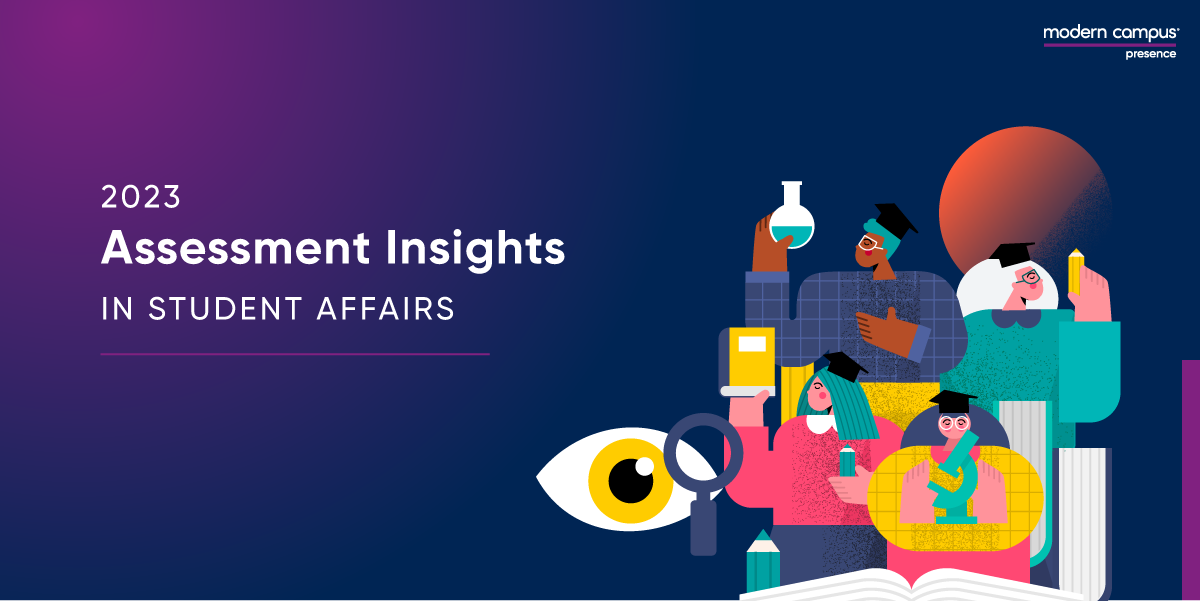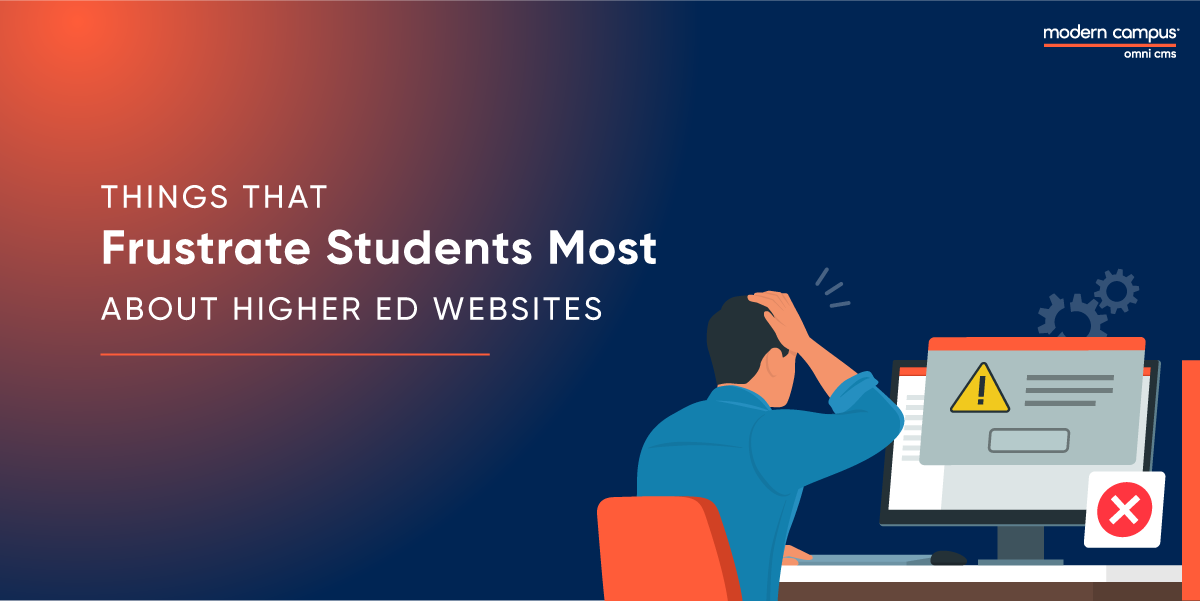Are You Delivering the Digital Experience Your Students Expect?
It’s official: Non-traditional education is the new normal. The trajectory of 2020 has pushed almost all formal learning from the classroom to the bedroom, and continuing education (CE) divisions are acting as the fail-safe for every school that has shut its doors but would still like to be, in essence, a school.
Although it’s nice to see CE divisions in the spotlight for a change, the quick shift to online learning has shown that most institutions are unprepared to put all of their eggs in the digital basket. Many students couldn’t access their programs, and when they could, many questioned the price tag for what they received.
But to pin it on the pandemic alone would be a mistake. Students were unhappy with their schools’ digital experience from the start. In a global student survey conducted by DJS Research, a third of respondents said their institution’s administration systems do not meet their expectations..
The same percentage said a poor administrative experience makes them less likely to recommend the institution to someone else. Globally, almost all surveyed students said they would prefer a single, universally accessible app to manage their academic experience, rather than a handful of sites and apps that leave them scratching their heads.
Digital Experience in a Post-Amazon World
Students are bringing consumer expectations to their school experience, and they’re taken aback when they find that their most important service provider can’t give them the same experience they get buying sneakers off Amazon.
Rachelle Clarke, dean of enrollment services at Rio Salado College, told “The EvoLLLution” that the modern student is a customer and expects a high-touch experience.
“They’re looking for service that’s friendly, immediate, accurate and goes the extra mile,” she said. “You can’t have people in an Amazon-like environment everywhere they go and then expect them to be satisfied with a non-Amazon experience at their college.”
The big names in eCommerce figured out long ago that customers need seamlessness if they want their business to be top of mind.
Your Customer Experience Is Your Brand
When an Amazon customer makes their purchase, they do so with no hurdles between them and the end of their transaction. In fact, every stage of the transaction is designed to remove customer effort from the equation. As Forbes pointed out, the company has stakes its reputation on convenience, and works tirelessly to ensure consumers get what they came for in as few clicks as possible. “Amazon doesn’t just want to reduce customer effort,” author Dan Gingiss wrote. “It wants to ‘eliminate’ it.”
Four Key Elements of a Seamless Experience
In a seamless online experience, the customer finds what they need at every stage of the transaction.
1. Is your digital experience personalized?
If an Amazon visitor has used the search bar even once before, they’re met with “daily deals” in line with whatever terms they searched. They browse offerings that the company’s automations think they might be interested in, and often enough, move to purchase what’s on the table.
If a student who last searched your programs for accounting fundamentals is greeted by a cooking course on your home page, you’re losing a student. The learner was already considering your offerings when they walked through the door.
Personalization — using a visitor’s past search terms to offer more relevant content — can be what leads them down the path to enrollment. If your online presence can give learners what they want before they know themselves, you’re making the most of their finite time and attention.
THINK ABOUT YOUR DIVISION: Can you easily use a student’s enrollment history to proactively suggest offerings that are relevant to that individual?
2. Can your learners find what they’re looking for?
When reviewing an offering, everything a customer needs to know about the product should be immediately apparent. Product images, a detailed description, reviews, related items, the option to add to a virtual shopping cart (present throughout the visitor’s journey) and the option to check out need to be present.
Is navigating and reviewing your programs as easy for your learners as it is for Amazon customers? When it’s not, students are frustrated and staff inundated with requests for up-to-date, relevant information.
A strong digital experience dictates that a learner should see all purchase data up front: what they’re going to learn, when the course starts, how much it costs, what certifications or credentials they’ll have when it’s complete, and so on.
A prospect who has to click through numerous pages to find information that should be centralized is a frustrated one — and frustrated prospects don’t become students.
THINK ABOUT YOUR DIVISION: Do you have advanced search functions that allow students to quickly and easily find the exact course, program or information they’re looking for without multiple clicks?
3. Is your checkout fast and easy?
With Amazon, any user who has made a purchase before has all payment information saved and ready to go. Credit card and address information are up for review, along with when the item will ship or be made available.
The order is placed, a confirmation email is sent and a tracking number is issued so the customer can know where they stand until the moment their order arrives. And, in the relatively rare event that assistance is needed, a dedicated support staff is standing by with relevant information to move visitors through the process.
The checkout step is integral to a smooth digital experience in continuing education. Unfortunately, it’s where many divisions slip up, with processes that complicate the transaction and put steps between the learner and their purchase.
Too many institutions play host to bad eCommerce practices, and it leads to would-be customers abandoning their digital shopping carts before a payment is placed.
Nearly 70% of online shopping experiences end with an abandoned cart. The reasons given paint a picture many CE learners are familiar with: not being able to see their order and costs up front, sketchy perceptions of the site’s security, slow product access after checkout and more. If any of these items ring a bell for your division, it’s time to rein in your unruly checkout process.
THINK ABOUT YOUR DIVISION: Does your checkout process look like Amazon’s, with a visual shopping cart, credit card and PayPal payment options, simplified discount options and market-leading cybersecurity practices in place?
4. Is your digital experience device-responsive and consistent?
What’s more, the experience Amazon offers is replicated on every available device, be it a desktop, tablet or phone. Save for switching from forefingers to thumbs, the experience of browsing, evaluating and paying for products is the same. The consistency makes it easy to move from one step to the next, as they know what to expect in every instance.
More purchases are being made from mobile devices every day, and it follows that students will peruse your programs on whatever device they have on hand. Too many students have been met with jumbled layouts, illegibly small text and all manner of error codes when trying to learn more about a program on their phone or tablet.
The response from CE divisions shouldn’t be to simply ignore the inconsistencies and hope students switch over to a desktop, but to acknowledge and adjust to the changes in how the modern student interacts with their online surroundings.
THINK ABOUT YOUR DIVISION: Do you get a consistent, but device-specific, web experience when you visit your division’s site on a mobile device, on a tablet and on a desktop or laptop computer?
Fewer Clicks, Less Fluff
Despite the wealth of information the customer receives at each stage of the transaction detailed above, this is all done within a few clicks.
There’s not an ounce of fluff here: A robust back end makes sure the customer sees what’s relevant to them at every stage, offering them an experience that they’ll remember as much for its simplicity as the purchase itself.
Seamlessness Is Crucial in Higher Education
Higher education administration hasn’t always prioritized the learner. Students wind up circling program websites for far longer than is necessary, hampered by irrelevant information, unclear navigation or software that can’t keep up with the demands of the modern student.
David Leasure, former provost of Western Governors University, said the biggest administrative obstacle for students is clunkiness.
“When we aren’t seamless, or when we cause friction in the interface, we waste the student’s time,” Leasure told “The EvoLLLution.” “They don’t only miss out on spending that time to learn what’s important; they get frustrated. If we don’t follow all the way through with a positive user experience, they’re going to question whether it’s a worthwhile thing for them to do and struggle to complete the course.”
And Gary Hepburn, dean of the G. Raymond Chang School at Ryerson University, said poorly-designed interfaces make it difficult for non-traditional students to get comfortable with their institution.
“In order to make the university accessible, it’s important to give non-traditional students an environment where they feel comfortable, that they can navigate themselves, and where they understand what we're asking them to do,” he said. “Not all systems designed for traditional learners offer that experience.”
These are digital experiences that don’t place the consumer first. And the truly horrible thing is, these poor digital experiences don’t benefit staff either! Administrators and support teams suffer just as much trying to fill in the gaps when students inevitably require additional, personal assistance on tasks they should be able to manage themselves.
THINK ABOUT YOUR DIVISION: Do most students require staff assistance — either by phone or in person — to conduct simple transactions such as registering for a course, acquiring a transcript or requesting a course drop?
Is Your Division’s Digital Experience Seamless?
Today’s student is an experienced consumer. With education moving — and to a great extent, staying — online, they have as much a choice in their education provider as they do in deciding what’s for dinner.
Tess Diver and Matt Thorton, both administrators at Southern New Hampshire University, wrote that higher education institutions need to take the lead from eCommerce giants when designing their digital experience.
“We are all familiar with brands that deliver amazing customer experiences — brands like Disney, Amazon, Starbucks, Apple and USAA,” they explained in their article for “The EvoLLLution.” “These companies understand that ‘consumers expect graceful and seamless journeys across the ecosystem’ ... and have created loyal customers by designing interactions and transactions to meet customer expectations and needs.”
Between a clunky online experience and a smooth one, learners are going to opt for the transaction that empowers them to find, review and pay for what they want, with as little strain as possible.
The Professional and Continuing Education leadership team at University of San Diego said schools need to take notes from big eCommerce companies and make their web presence easy for all users to navigate.
“Amazon has successfully made their user interface easy-to-use, even for non-tech savvy users. Features such as recommended products based on user search intent, purchase history and cart reminders make an Amazon-like experience very powerful for an organization. The ability to find what you want, choose it and get it (register, pay, etc.) with a few clicks (after you are in the system, of course), is the expected ‘customer’ experience in today’s marketplace, no matter what you are selling,” they wrote.
They summed up the importance of an enhanced digital experience quite well: “The easier we make their experience to get into our classes, the better opportunity we have to obtain and retain those students. On the other hand, if we make the system onerous or cumbersome, they will simply choose to go elsewhere, as they have options in their continuing education.”
Why a Seamless Digital Experience Matters
Learn how Destiny One Student Lifecycle Management can help deliver the digital experience your students expect.
Student Experience Student Lifecycle Management
Last updated: February 1, 2021



